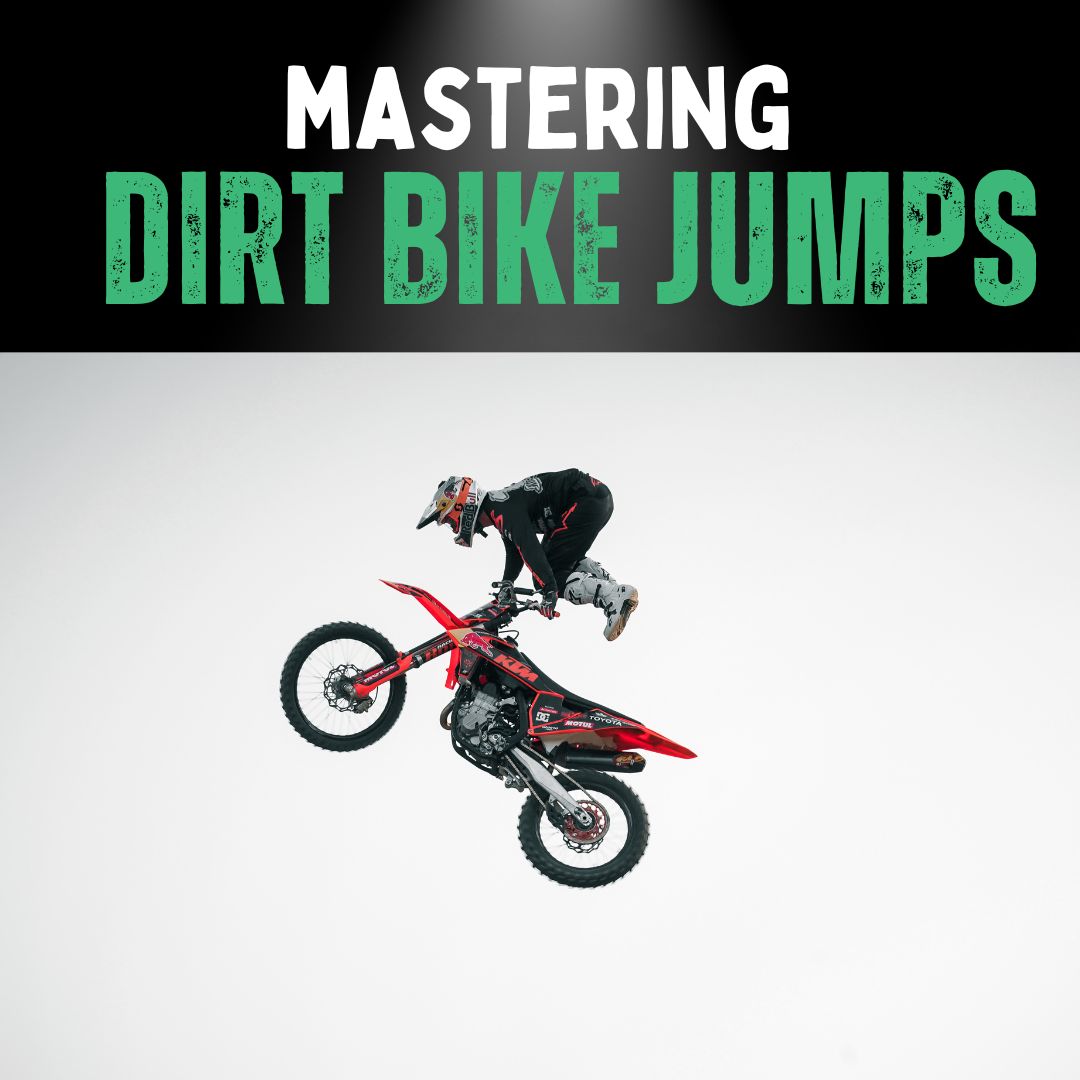
Updated: 28.4.25
Dirt bike jumping isn't just about catching big air—it's a thrilling sport that demands skill, precision, and a fearless spirit. Whether you're a beginner rider or have a few races under your belt, mastering jumps requires the right technique, a focus on safety, and plenty of confidence.
In this guide, we'll cover key techniques, safety essentials, and pro-level tips to help you conquer the ramps and ride like a champion.
Mastering the Basics: Key Techniques for Dirt Bike Jumps
1. Body Position
Good jumps start with the right posture. Stay slightly crouched, elbows up, and weight centered over the pegs. Mastering body position gives you flexibility to react mid-air and control your landing with ease.
2. Throttle Control
Throttle timing is crucial. Maintain smooth, consistent throttle on the approach to stay balanced and steady during takeoff and landing.
3. Landing Like a Pro
Prepare to land standing on the pegs with knees slightly bent. Let your legs absorb the impact and stay loose to adjust to the bike's motion.
Preparation: Laying the Groundwork for Big Jumps
Before hitting the ramps, inspect the track. Check for obstacles, examine the takeoff and landing areas, and mentally rehearse your jump. Preparation dramatically cuts down risks and boosts your confidence on the track.
Progressive Training: Building Skills the Right Way
1. Start Small
Begin with easy jumps. Master the basics first, then work your way up to larger and more technical jumps as your confidence grows.
2. Practice Makes Perfect
Repetition refines technique. Drill smaller jumps until they become second nature before moving onto more demanding challenges.
3. Reflect and Improve
After every jump session, review what worked and what didn’t. Getting feedback from a coach or a seasoned rider can speed up your progress.
4. Mental Game Matters
Visualise your jumps and focus on breathing techniques to stay calm. A positive mindset can make or break your performance.
Safety First: Essential Gear and Habits
1. Full Protective Gear
Helmet, gloves, goggles, boots, chest protector—no compromises. Your gear is your first line of defence.
2. Build Experience Gradually
Attempt jumps that match your skill level. Gaining experience progressively reduces risks and sharpens your instincts.
Professional Training: Level Up Your Skills
Why Professional Coaching Matters
Getting trained by experienced instructors accelerates your learning, boosts your confidence, and helps you avoid common pitfalls.
Top Dirt Bike Training Schools in the UK
- Lee Dunham Racing: Ideal for all skill levels with inclusive packages including bike hire.
- The MX School - Paul Malin: Perfect for those serious about competitive motocross.
- Dave Thorpe Honda Off-Road Centre: Adventure and motocross training in scenic Exmoor National Park.
- RMJ Pro MX Academy: High-quality coaching across the UK and Europe.
- Chiltern Young Riders: Great for young and beginner riders looking for solid foundations.
Different Types of Dirt Bike Jumps
Understanding various jump types helps sharpen your strategy and safety:
| Jump Type | Description |
|---|---|
| Tabletop Jump | Flat top with safe landings; ideal for beginners. |
| Double Jump | Two mounds with a gap; requires precise timing. |
| Triple Jump | Three consecutive jumps; higher skill needed. |
| Step-Up | Jumping up to a higher landing point. |
| Step-Down | Descending to a lower landing; demands control. |
| Ski Jump | Long drop-off; tests aerial control. |
| Quad | Four consecutive jumps; for advanced riders only. |
Bike Setup for Jumping Success
| Jump Type | Suspension Setting | Tyre Type |
|---|---|---|
| Tabletop & Double Jumps | Medium Firmness | Standard Off-road |
| Triple & Quad Jumps | Firm | Hard Terrain |
| Step-Up & Step-Down | Adjustable for Height | Soft to Medium Terrain |
| Ski Jumps | Soft Setting | Soft Terrain |
Final Thoughts: Your Path to Jumping Mastery
Progress at your own pace, stay consistent with practice, and always prioritise safety. Mastering dirt bike jumps isn't just about airtime—it's about skill, preparation, and smart riding. Every session is a chance to improve and enjoy the thrill of the sport.
Ready to Ride? 🏍️
Check out our collection of kids' ride-on dirt bikes and inspire the next generation of motocross champions!





Share:
When Should Dirt Bike Tyres Be Replaced?
Navigating Dirt Bike Laws: A UK Perspective